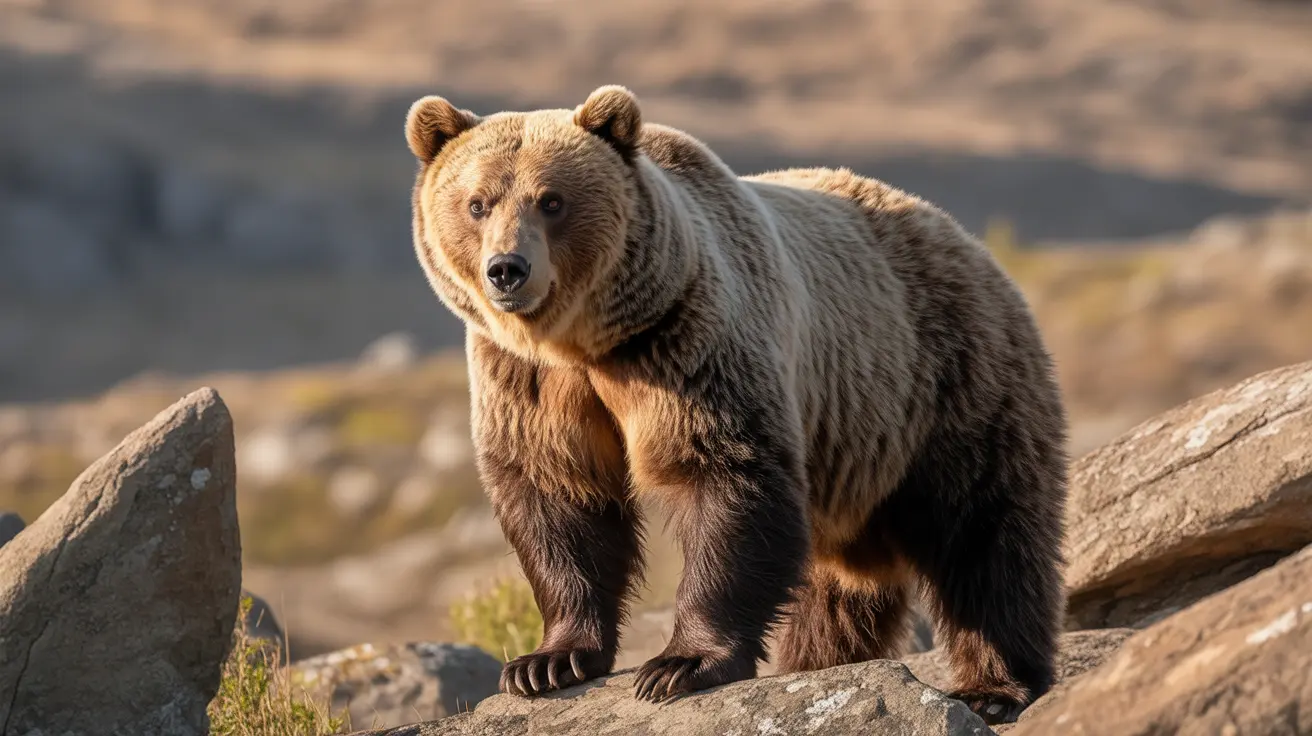Glacier National Park stands as one of Montana's most treasured wilderness areas, home to an extraordinary array of wildlife that captivates visitors from around the globe. This pristine ecosystem harbors some of North America's most iconic species, making it a premier destination for wildlife enthusiasts and nature lovers seeking unforgettable encounters with wild animals.
The park's diverse habitats, ranging from alpine meadows to dense forests and crystal-clear lakes, support a rich tapestry of life that includes everything from massive grizzly bears to delicate mountain wildflowers. Understanding the animals in Glacier National Park not only enhances your visit but also deepens your appreciation for wildlife conservation efforts that protect these magnificent creatures for future generations.
Bear Watching Glacier National Park: Giants of the Wilderness
Among the most sought-after wildlife experiences in Glacier National Park is observing the park's impressive bear population. Both black bears and grizzly bears call this wilderness home, with grizzlies being particularly iconic symbols of the American West. These powerful predators play crucial roles in maintaining ecological balance, dispersing seeds and controlling prey populations throughout their vast territories.
The best time to see wildlife Glacier offers includes early morning and evening hours when bears are most active, particularly during berry season in late summer. Visitors should maintain safe distances of at least 100 yards from all bears and carry bear spray as a precautionary measure.
Mountain Goats Glacier: Masters of Vertical Terrain
The park's steep cliffs and rocky outcrops provide perfect habitat for mountain goats, remarkable climbers that seem to defy gravity as they navigate treacherous terrain. These sure-footed animals possess specialized hooves with soft pads that provide exceptional grip on rocky surfaces, allowing them to access food sources and escape routes unavailable to most predators.
Mountain goats in Glacier National Park are often spotted along the park's high-elevation roads and trails, particularly near Logan Pass, where their white coats stand out dramatically against the dark rock faces.
Bighorn Sheep Glacier: Iconic Symbols of the Rockies
Bighorn sheep represent another flagship species that thrives in Glacier's rugged landscape. Males, known as rams, are famous for their massive curved horns that can weigh up to 30 pounds. These impressive animals demonstrate remarkable social behaviors, with ewes and lambs forming tight-knit family groups while rams establish dominance through spectacular head-butting contests.
The biodiversity Glacier National Park supports extends beyond these large mammals to include numerous other species that contribute to the ecosystem's complexity and resilience.
Moose Spotting Glacier: Gentle Giants of Wetland Areas
In the park's marshy areas and along lakeshores, lucky visitors may encounter moose, the largest members of the deer family. These impressive animals can weigh up to 1,500 pounds and stand over six feet tall at the shoulder. Moose prefer wetland habitats where they feed on aquatic vegetation, making areas like the North Fork and certain lake regions prime moose spotting Glacier locations.
Rare Animals Glacier: Elusive Predators
Among the more elusive inhabitants are lynx Glacier National Park populations and the incredibly rare wolverine Glacier species. These solitary predators require vast territories and pristine wilderness conditions to survive, making successful sightings exceptionally rewarding for dedicated wildlife watchers.
Birdwatching Glacier National Park: Avian Diversity
The park supports over 270 bird species, from tiny hummingbirds to magnificent golden eagles. This impressive avian diversity reflects the variety of habitats and elevation zones found throughout the park, creating opportunities for both casual observers and serious ornithologists to discover remarkable species.
Wildlife Conservation Glacier: Protecting Natural Heritage
Glacier National Park serves as a critical refuge for species that have disappeared from much of their historic range. The park's wildlife conservation efforts focus on maintaining habitat connectivity, monitoring population health, and educating visitors about the importance of preserving these natural communities for future generations.
Frequently Asked Questions
What are the best times of day to see wildlife in Glacier National Park?
Early morning hours (dawn to 9 AM) and late afternoon to evening (5 PM to dusk) offer the highest chances of wildlife encounters. Many animals are more active during these cooler periods when they venture out to feed and move between habitats. Summer months provide the longest daylight hours and most accessible viewing conditions.
Which animals are most commonly spotted in Glacier National Park, and where should I look for them?
Mountain goats are frequently seen near Logan Pass and along the Going-to-the-Sun Road, while black bears and grizzly bears are commonly observed in berry patches and meadows throughout the park. Bighorn sheep often graze in open areas along roadways, and moose can be found near lakes and marshy regions, particularly in the North Fork area.
How can I safely observe bears and other large predators in Glacier National Park?
Always maintain a minimum distance of 100 yards from bears and 25 yards from other wildlife. Carry bear spray and know how to use it properly. Make noise while hiking to avoid surprising animals, store food securely, and never feed wildlife. If you encounter a bear, remain calm, avoid direct eye contact, back away slowly, and speak in a calm, firm voice.
Glacier National Park's incredible wildlife diversity makes every visit a potential adventure, offering glimpses into the complex web of life that has thrived in this pristine wilderness for thousands of years. By respecting these animals and their habitat, visitors become part of the conservation story that ensures future generations can also experience these wildlife wonders.






